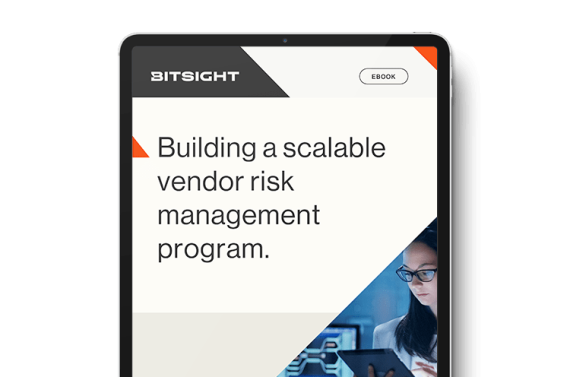Is your business adopting vendors faster than you can address their security issues? Get the keys to scaling your Vendor Risk Management program, from assessment to ongoing monitoring, and proactively mitigate risk in an ever-expanding third-party network.

It’s highly likely that there will be new outsourcing opportunities to increase efficiency, deliver better customer experiences, and reduce costs this year.
However, when third-party vendors gain access to company data and systems, it’s critical to have a vendor risk management (VRM) program in place to assess, control, and minimize their inherent risk to the organization.
These are the main reasons why today’s organizations need better VRM programs.
1. More vendors are entering the digital supply chain
Fueled by the accelerated digital transformation and the shift to the cloud, organizations are turning to more SaaS vendors to outsource business functions.
With the spread of remote work, new levels of risk come from the use of personal devices, unsecure networks, and potentially unauthorized apps that support remote collaboration.
The tools and processes currently in place to manage and reduce vendor risk are often manual and resource intensive —think spreadsheet-based questionnaires and risk assessments— making it nearly impossible to scale with business growth.
Only a scalable Vendor Risk Management program can keep up with vendor adoption and provide a frictionless process for sourcing, onboarding, managing, and monitoring vendors across the organization.
2. The risk of suffering a third-party data breach is rising
Most organizations don’t have 100% visibility over their third-party ecosystem.
With the expansion of outsourcing, it has become more difficult to track who has access to the system, what vendors each team is using, and what data they manage.
This is especially true in manual VRM workflows that focus their limited resources on performing due diligence and risk assessments, and fail to work on risk monitoring and remediation.
Some of the biggest and most costly data breaches in history used third-party vendors and software vulnerability exploits across the supply chain as entry points.
From the infamous Target data breach in 2013 to the recent SolarWinds, Hafnium, and Kaseya incidents; malicious actors often find their way to an organization’s network through its vendors and third parties.
All of this points to why vendor and third-party security —how well an organization protects its extended enterprise— is so important. A robust and scalable Vendor Risk Management program is the only way to effectively protect the extended supply chain, making sure all vendors, especially those who handle critical data, are carefully monitored.
5 Keys to Building a Scalable Vendor Risk Management Program

5 Keys to Building a Scalable Vendor Risk Management Program
3. Regulation is forcing companies to take action
Regulations and standards push every industry to do more and improve their security maturity through validated frameworks. The regulatory landscape is ever evolving, with state, federal, and international standards demanding compliance.
In the early years of third-party risk management, regulation was mainly focused on the banking industry, which faced a continuous pattern of cyber attacks while handling extremely sensitive information.
With the rise of SaaS, data became more scattered than ever and regulation crept into other industries like insurance, energy, and utilities.
Privacy regulations like GDPR or CCPA, and industry-specific standards such as HIPAA in Healthcare, NYDFS in Finance, or NERC CIP-013 in the Utilities sector are likely to keep being sanctioned. This push creates a greater need to ensure an organization’s third-party ecosystem is as safe as its internal network.
75% of users will be protected by privacy regulation by the end of 2023.
Making VRM A Priority In 2023
Organizations are demanding stronger security posture from their vendors, and the only way to oversee them is with a mature and scalable vendor risk management process in place to assess, monitor, and reduce vendor risk.
Typical stages include initial risk tiering, vendor onboarding and due diligence, and ongoing reassessment. You can learn more in our ebook: "5 Keys to Building a Scalable VRM Program".
Now that you have the evidence on why VRM is critical in today’s organizations, it’s time to get started. If you’re struggling with manual and time-consuming vendor questionnaires, try switching to an automated approach for faster, more strategic risk assessments.
Bitsight VRM can help you:
- Automate the vendor risk assessment process to improve efficiency and stakeholder visibility while retiring manual tools like emails and spreadsheets.
- Prioritize critical and high-risk vendor assessments with customized workflows.
- Accelerate your efforts with insights from a network of 20,000+ vendor security profiles.
- Make better risk decisions with a process powered by Bitsight’s best-in-class cybersecurity ratings and analytics.
Whether it’s getting started or taking your program to the next level, Bitsight has the tools and services to help your team execute on your vendor risk management program.